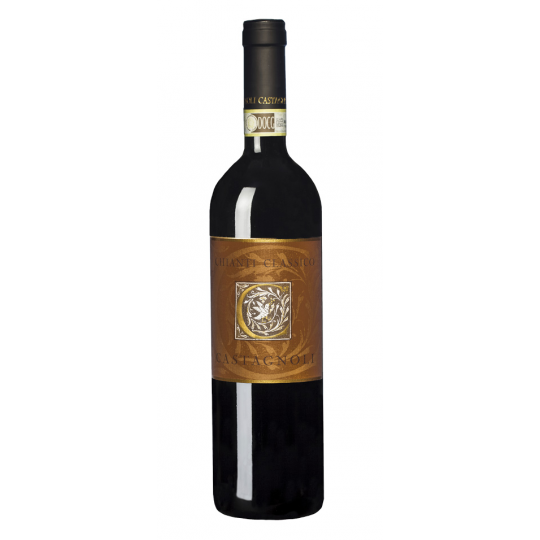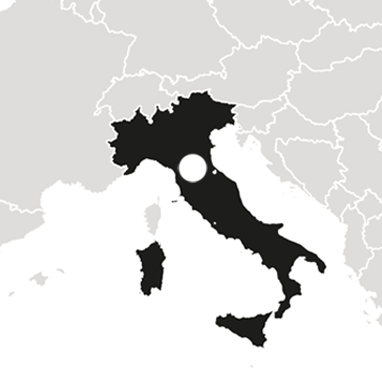Waarom deze wijn?
Jaargang 2015 is volgens Robert Parker 'outstanding' in Chianti. De meest gerespecteerde Britse wijncritica Jancis Robinson heeft juist deze 100% biologische Chianti van Castagnoli de beste van het jaar 2015. Ze noemt hem 'rather gorgeous.' Dus lijkt me niet te missen voor een Chianti fan.
De smaak
Een intens rijk en fruitige wijn met aroma's van frambozen, kersen en subtiele tonen van vanille en caramel. Super zacht, mooi in balans met rijpe, ronde tannines en verfrissende zuren.
Om optimaal te genieten van deze biologische en traditioneel gemaakte wijn, raden wij aan, om 15-20 minuten voor het opdienen, de wijn te laten "ademen".
De details
type wijn: elegant, rijk en 'spicy'
druivensoort: 100% Sangiovese
teelt: biologisch
opvoeding : 14 maanden op eikenvaten van 18 hl.
alcoholgehalte: 13,50 % vol.
afsluiting: natuur kurk
drinktemperatuur: 14-16 graden
bewaarpotentieel: nu tot 2023
Spijs-aanbeveling
Een heerlijke eetwijn, bijvoorbeeld bij lamsbout, lamskoteletten, rosbief in madeirasaus, ossobuco, wilde eend, hert en knapperige verse pizza met paddestoelen en verse tomaten. Wat de kazen betreft past Chianti Classico goed bij jonge frisse kazen zoals Engelse Cheshire, Hollandse jonge of belegen Gouda kaas en Italiaanse taleggio.
De prijzen elders?
Wij vergelijken het voordeel altijd met de prijzen in de online-markt. Belangrijk is dat er dan wel 'appels met appels' worden vergeleken; dus precies dezelfde wijn per 6 flessen van (bij voorkeur) hetzelfde jaar èn bij jou thuisbezorgd (de bezorgtarieven elders zijn meegenomen in de prijscheck).
De oorsprong
Het kleine wijnhuis Castagnoli ligt in het hart van de Chianti Classico in de wijncommunes Castellina in Chianti. Een van de belangrijkste stadjes in de historische wijnregio Chianti Classico. Al meer dan 300 jaar geleden kreeg het de status van beschermde herkomstregio DOCG kreeg. Oorspronkelijk was Castagnoli een abdij totdat de Florentijnse edelen hun intrek namen. Sinds 1981 wordt er wijn gemaakt.
De hoge ligging van het landgoed op de zuidelijke en zuidwestelijke hellingen is perfect voor de ontwikkeling van de Sangiovese druiven. Het weer in Toscane zorgt voor een perfecte rijpheid en de kalkhoudende bodem voor grote elegantie en frisheid in de wijnen van Castagnoli. De volledige biologische werkwijze zorgt er mede voor dat het terroir in de wijn maximaal tot zijn recht komt, elk jaar opnieuw.
Slimme weetjes: Chianti van weleer
A Chianti wine [?kjanti] is any wine produced in the Chianti region, in central Tuscany, Italy. It was historically associated with a squat bottle enclosed in a straw basket, called a fiasco. however, the fiasco is only used by a few makers of the wine now; most Chianti is now bottled in more standard shaped wine bottles. Baron Bettino Ricasoli (later Prime Minister of the Kingdom of Italy) created the Chianti recipe of 70% Sangiovese, 15% Canaiolo and 15% Malvasia bianca in the middle of the nineteenth century.
From Wikipedia, the free encyclopedia.
Slimme weetjes: het hart van Chianti is Chianti Classico
The first definition of a wine-area called Chianti was made in 1716. It described the area near the villages of Gaiole, Castellina and Radda; the so-called Lega del Chianti and later Provincia del Chianti (Chianti province). In 1932 the Chianti area was completely re-drawn and divided in seven sub-areas: Classico, Colli Aretini, Colli Fiorentini, Colline Pisane, Colli Senesi, Montalbano and Rùfina. Most of the villages that in 1932 were suddenly included in the new Chianti Classico area added in Chianti to their name-such as Greve in Chianti which amended its name in 1972. Wines labelled "Chianti Classico" come from the biggest sub-area of Chianti, that includes the original Chianti heartland. Only Chianti from this sub-zone may boast the black rooster seal (known in Italian as a gallo nero) on the neck of the bottle, which indicates that the producer of the wine is a member of the Chianti Classico Consortium, the local association of producers.
From Wikipedia, the free encyclopedia.
Slimme weetjes: Welke druiven mogen in een Chianti
During the 1970s producers started to reduce the quantity of white grapes in Chianti. In 1995 it became legal to produce a Chianti with 100% Sangiovese. For a wine to retain the name of Chianti, it must be produced with at least 80% Sangiovese grapes. Aged Chianti (38 months instead of 4–7), may be labelled as Riserva. Chianti that meets more stringent requirements (lower yield, higher alcohol content and dry extract) may be labelled as Chianti Superiore, although Chianti from the "Classico" sub-area is not allowed in any event to be labelled as "Superiore".
From Wikipedia, the free encyclopedia.


